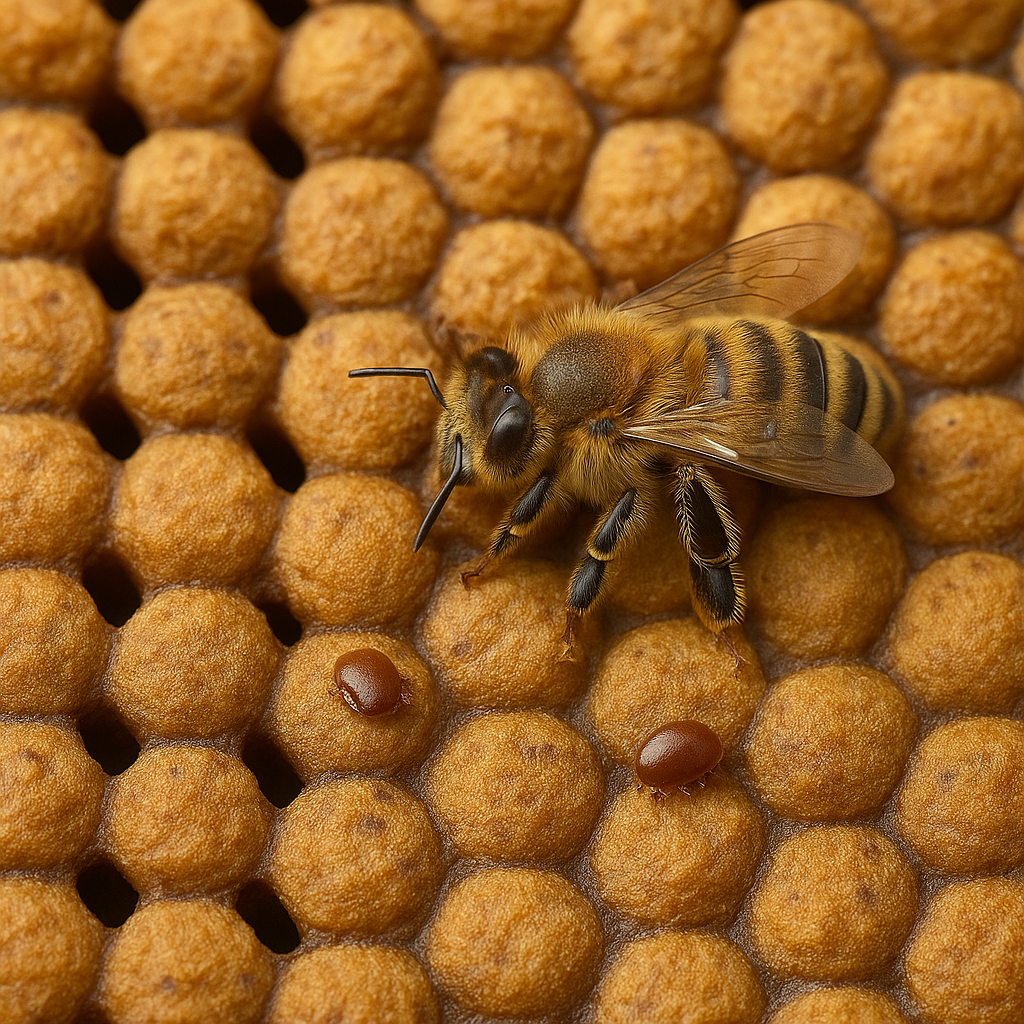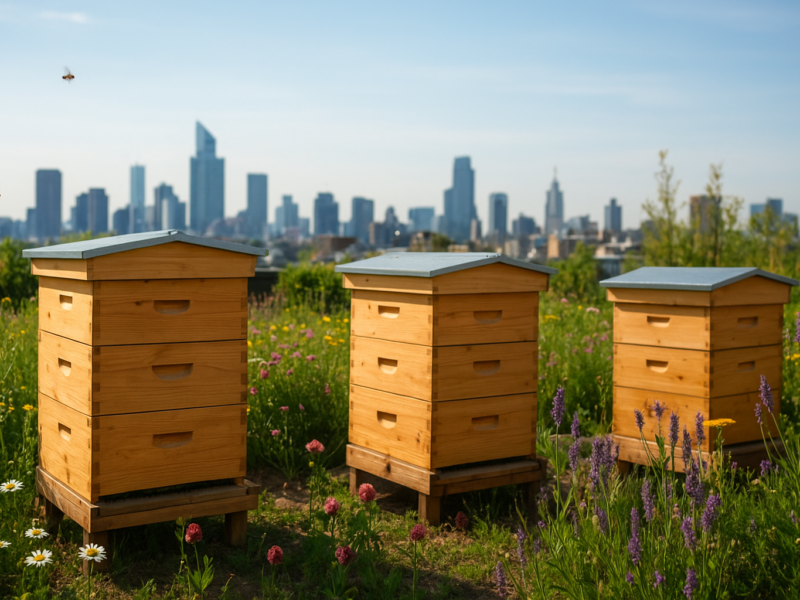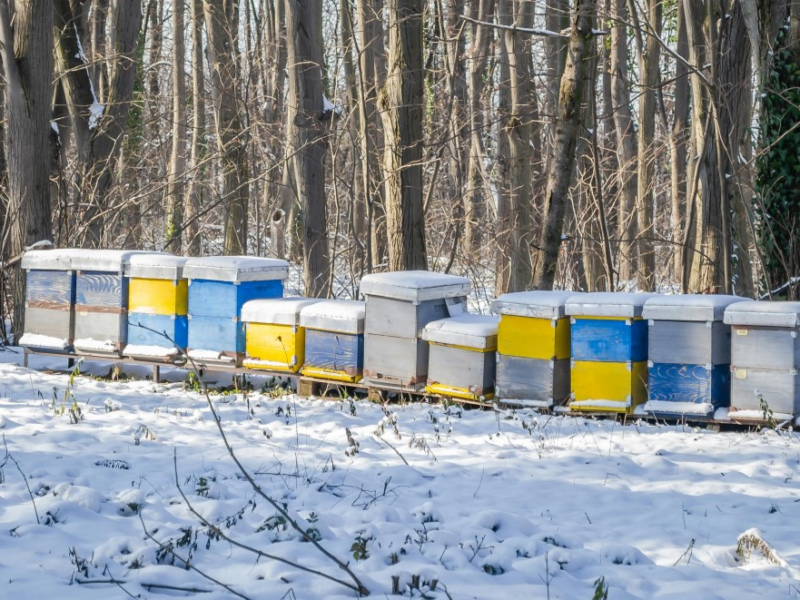🐝 Introduction: Why Varroa Mites Are Beekeeping’s Biggest Threat
Varroa destructor is often described as the “archenemy of modern beekeeping.” These tiny external parasites feed on the fat bodies and hemolymph (bee blood) of adult bees and brood. Left unchecked, they can devastate entire colonies within months.
Every beekeeper — beginner or professional — will eventually face Varroa. But the key is early detection, balanced management, and consistent monitoring.
🟨 Did You Know?
Varroa mites originally parasitized the Asian honeybee (Apis cerana), but jumped to the Western honeybee (Apis mellifera) in the mid-20th century — and have spread worldwide ever since.
🔬 Understanding Varroa Destructor
Varroa mites are reddish-brown, oval-shaped parasites about 1.1 mm long. They cling tightly to bees and reproduce within the capped brood cells, especially in drone cells where development time is longer.
🧠 The Varroa Life Cycle:
- A fertilized female mite enters a brood cell shortly before it’s capped.
- She lays eggs that hatch into male and female offspring.
- They feed on the developing bee larva.
- The mature females emerge with the young adult bee to infest others.
This cycle repeats continuously during warm months, leading to explosive population growth.
⚠️ How Varroa Affects the Hive
Varroa mites weaken bees both directly and indirectly:
1. Physical Damage
Mites feed on the bees’ fat stores, crucial for overwintering and immunity.
2. Virus Transmission
They spread over 15 known viruses, including:
- Deformed Wing Virus (DWV)
- Acute Bee Paralysis Virus (ABPV)
- Chronic Bee Paralysis Virus (CBPV)
3. Reduced Brood Viability
Infested larvae often emerge weak, deformed, or die prematurely.
4. Winter Losses
Colonies heavily infested in late summer often collapse before spring.
🐝 Healthy colonies can tolerate some mites, but the danger lies in unchecked exponential growth.
🔎 How to Detect and Monitor Infestations
Monitoring Varroa levels is essential to decide when to treat — not just treat blindly.
🧪 1. Sugar Roll Test
- Collect ~300 bees from a brood frame.
- Place them in a jar with 2 tablespoons of powdered sugar.
- Shake gently for one minute, then pour contents through a mesh onto white paper.
- Count the mites.
✅ Safe for bees — they can be returned to the hive.
💧 2. Alcohol Wash
- Similar to the sugar roll, but uses isopropyl alcohol.
- Kills the sampled bees but gives the most accurate mite count.
🪞 3. Sticky Board Method
- Place a sticky board under a screened bottom board for 24–72 hours.
- Count fallen mites.
🧭 Mite Thresholds
- Spring/Summer: ≤2 mites per 100 bees (safe)
- Fall: ≤3 mites per 100 bees (borderline)
- >4 mites per 100 bees: Treatment required immediately
🌿 Natural Varroa Control Methods
Natural and non-chemical methods can keep mite populations low without contaminating honey or harming bees.
🧊 1. Drone Brood Removal
Varroa prefer drone brood because of its longer capping time.
👉 Install drone foundation frames → once capped → remove and freeze them.
🍯 2. Sugar Dusting
Dusting bees with powdered sugar encourages grooming behavior — mites fall off naturally.
🐝 3. Brood Interruption
By temporarily caging the queen or splitting colonies, you can break the mite’s reproductive cycle.
🔥 4. Heat Treatment
Devices like the Varroa Controller expose capped brood to controlled heat (~42°C), killing mites without harming brood.
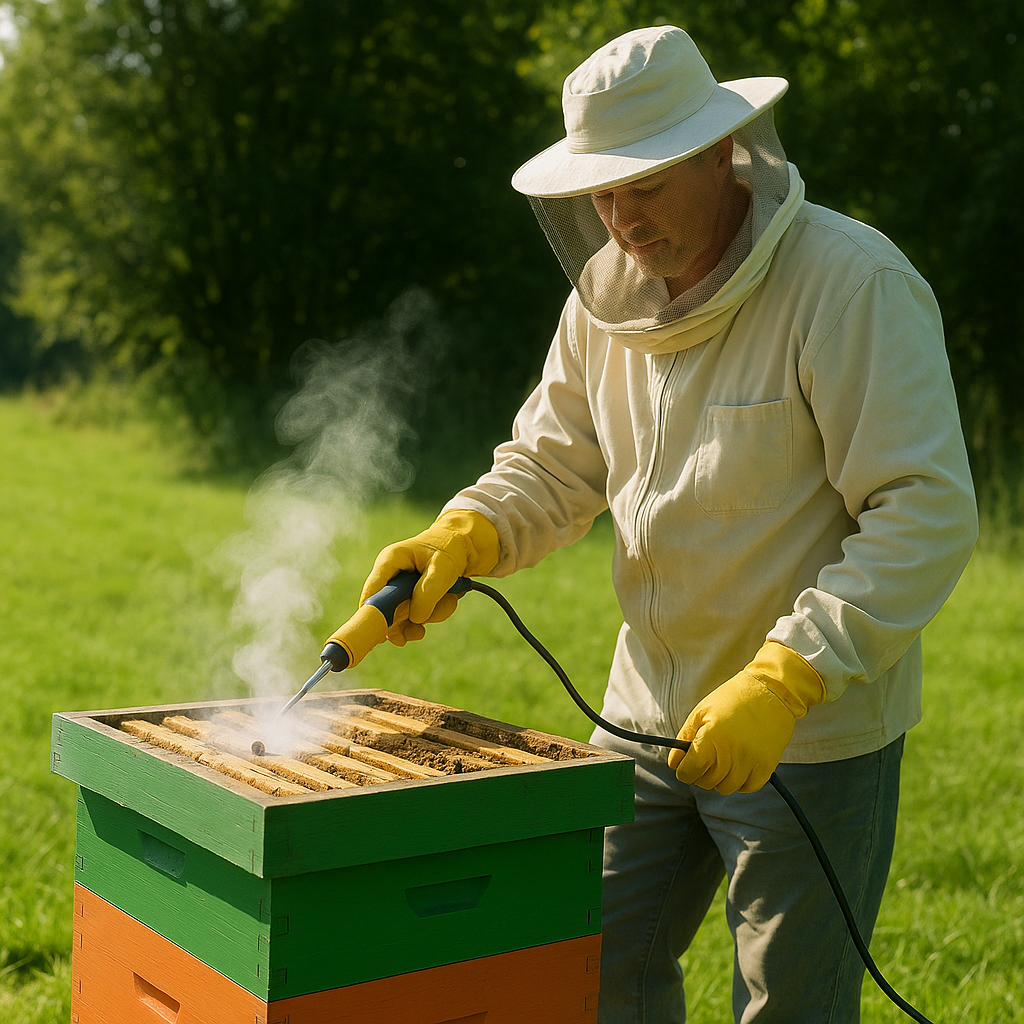
🌿 5. Organic Acids & Oils (Natural Treatments)
- Formic Acid (MAQS): Penetrates capped cells; used in warm weather.
- Oxalic Acid: Effective during broodless periods.
- Thymol (Apiguard): Derived from thyme oil, effective in late summer or early fall.
- Hop Beta Acids (HopGuard): Plant-based, leaves no residue.
🟩 Important: Always follow dosage and temperature guidelines. Misuse can stress colonies.
⚗️ Chemical Treatment Options
When infestation levels are high, chemical treatments are sometimes necessary to save colonies.
🔹 Amitraz (Apivar)
Highly effective, especially against resistant Varroa populations. Use during spring or fall flow-free periods.
🔹 Fluvalinate (Apistan) and Coumaphos (CheckMite+)
Older synthetic miticides — use sparingly due to resistance and residue risks.
🔹 Formic Acid Strips
Penetrate capped brood, ideal for active colonies. Temperature-sensitive (10–30°C).
⚠️ Avoid Overuse
Rotating treatments prevents resistance and contamination in honey supers.
🧠 Pro Tip: Record every treatment type and date to avoid overexposure and ensure proper rotation.
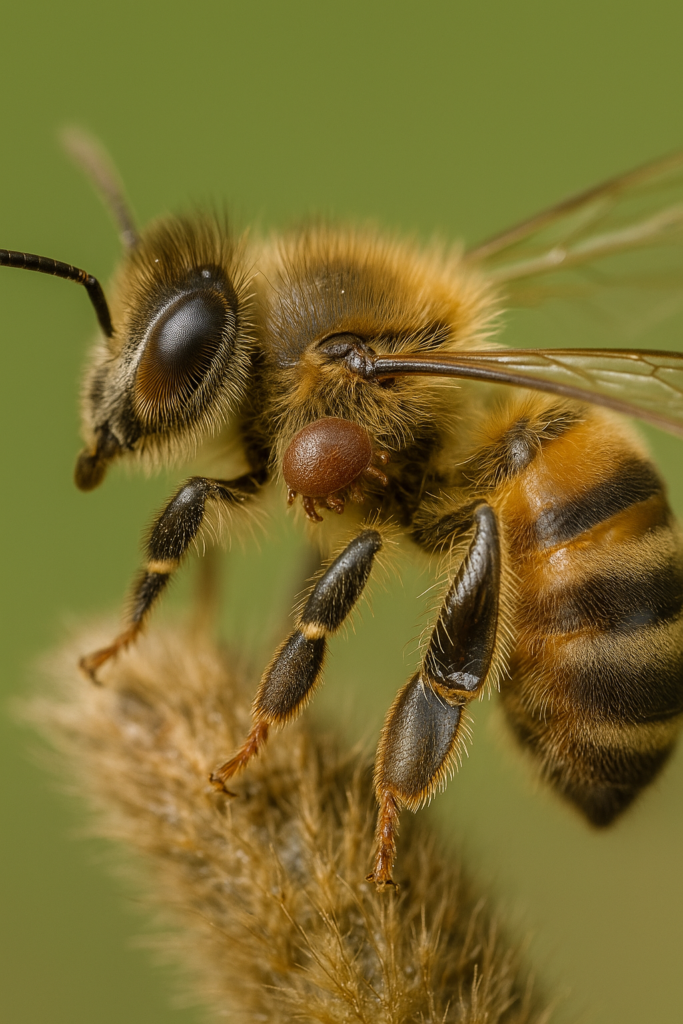
🧩 Integrated Pest Management (IPM)
The most successful beekeepers don’t rely on one method — they combine strategies throughout the year.
IPM Principles:
- Monitor regularly
- Rotate treatments
- Combine natural and chemical controls
- Maintain strong queens and genetics
- Remove drone brood in spring
- Feed only when necessary
📅 Seasonal Varroa Control Schedule
| Season | Key Actions |
|---|---|
| Early Spring | Sugar roll test; re-queen weak colonies; consider oxalic acid vapor. |
| Late Spring / Early Summer | Drone brood removal; monitor again mid-summer. |
| Mid to Late Summer | Apply thymol or formic acid; inspect brood health. |
| Fall | Perform alcohol wash; treat aggressively if counts high. |
| Winter (Broodless) | Oxalic acid dribble or vaporization for residual mites. |
🛡️ Preventive Measures for Long-Term Hive Health
- Keep young, productive queens (less swarming, more stability).
- Maintain diverse forage (stronger immunity).
- Avoid overcrowding apiaries.
- Practice regular monitoring (every 3–4 weeks).
- Combine natural and minimal chemical strategies.
💬 FAQ
Q: Can Varroa mites be completely eliminated?
No. The goal is control, not eradication. Even low mite populations can rebound rapidly.
Q: Is oxalic acid safe for bees?
Yes, when used according to label directions and during broodless periods.
Q: Should I treat all my hives simultaneously?
Absolutely — untreated hives can reinfest treated ones within days.
Q: How often should I monitor for Varroa?
At least once a month during the active season.
🧠 Conclusion
Varroa mites will never disappear from modern beekeeping — but your management strategy determines whether your bees survive or fail.
By combining routine monitoring, targeted treatments, and strong colony management, you can maintain thriving, resilient hives.
Be proactive, not reactive — and your bees will reward you with strength, honey, and sustainability.

